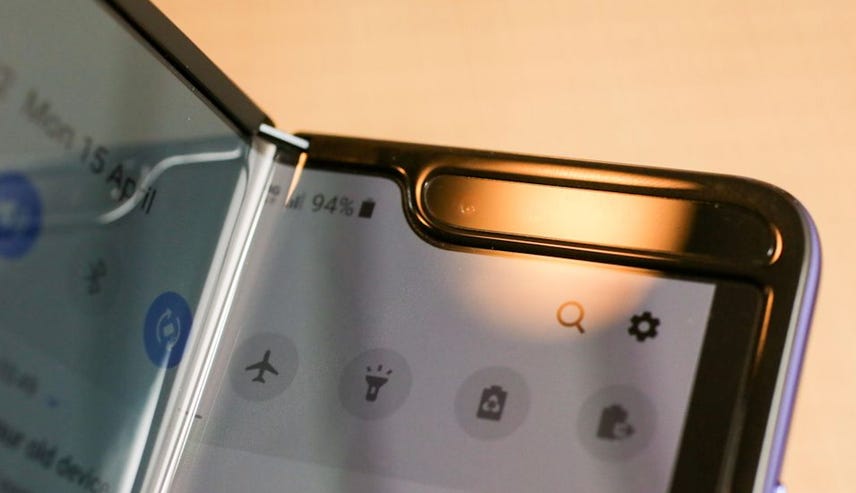
Samsung's big launch for the Galaxy fold, is facing potential disaster.
Because several technology reviews saw their screens break and glitch out just a few days after getting the phone.
So what exactly's going on here.
Well it looks like there could be several different issues.
First of all, the Fold, it's a big deal for Samsung.
You have this splashy new gadget.
It's been talked about for years.
And it's one of the first foldable screen smart phones.
So even with its hefty price tag of two grand, Samsung sold out of the First batch of pre-orders and the phone is expected to hit stores April 26th.
That's next week.
But, a few phone models always go out early, like review units for tech journalists and four different reviewers saw screen failure.
After just two days.
The reporter at [UNKNOWN], he said half of the screen just started flickering on him, and he had no idea why.
Over at the verge, they saw this weird bulge appear on the [UNKNOWN] of the screen, like there's some kind of debris stuck inside Or maybe part of the hinge itself got stuck and is poking up into the display.
And then there's this whole other issue going on, it's happening with this sticky protective layer on the main screen.
A reporter at Bloomberg peeled away a layer of film.
And it rendered the whole screen completely broken.
YouTuber Marques Brownlee he also shared a similar issue on Tweeter.
He said he started to try to take off the film and the display spazzed and just blacked out.
So.
Yeah this is not a screen protector, this is part of the display and it's not meant to be removed.
So why did two phone experts try to peel it back?
Well, they each said there was no warning that it was a vital component to the display functioning so they could have just thought at first it was a screen guard.
And it's not clear how easy or hard it was to pull it off, or how bonded it was to the screen but a plastic layer is still not something you see all the time on other phones.
And that's because this is not like other phones it is completely different screen technology.
The inside screen is made of plastic.
Stand bending and flexing, so a glass screen may not need the layer but clearly this polymer screen needs it to function.
Now overall this is a more complicated phone.
You have more moving parts and that means more ways for things to go wrong.
There's a hinge where things get stuck or brake Each side of the phone has it's own battery, so that means twice the battery that could fail.
And then there's the whole inside bending screen.
And who knows how that's gonna hold up over time.
And here at CNET, we did not experience any of these problems.
However, viewer Jessica Dolcourt said she emailed Samsung to ask about that odd protective layer.
And Samsung told her to not remove it, so we didn't.
Samsung has taken back the problem phones from the other reviewers.
It's gonna investigate what's going on.
But in the meantime, the company released a statement saying that, the protective layer is part of the display structure.
The company is going to make sure that when it ships to consumers, there's gonna be some sort of clear indication to not remove it.
A director at T Mobile, he tweeted out this image.
He said that final production models are gonna have a warning on a wrap that goes over the screen that says, don't peel it off or use any other screen protector on it.
So obviously, without the film being pulled off they were two reviewers who still had issues.
So our consumers gonna have to worry about glitchy screens.
And it's hard to say for sure, but these review units are early production models.
So they could be different from the ones that line up in the consumers' hands.
Now if you did order one should you get a refund?
Well, maybe you want to wait and see at this point, after all Samsung does not want another Note battery disaster on it's hands so the company would be smart to give refunds if there is any glitch.
Although I would not jump to get one right now if you haven't done so already.
We're watching this closely, so stay tuned to CNET for further developments.